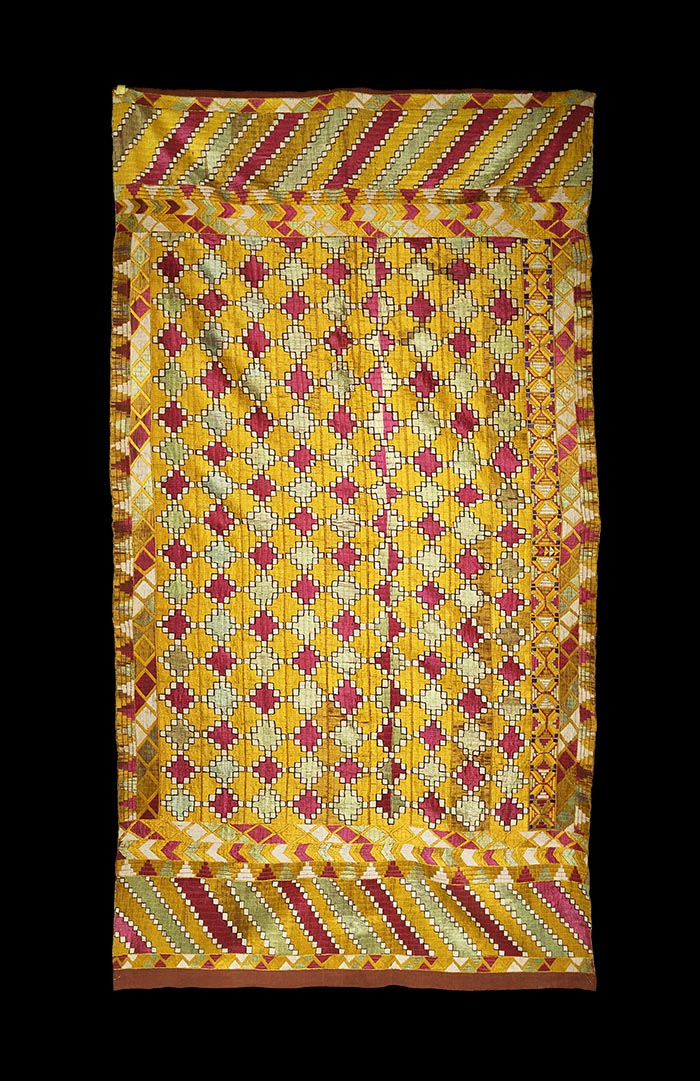Phulkaris
Silk on Cotton
19th Century to Mid 20th Century
India and Swat Valley, Pakistan
Dimensions of Phulkaris vary in Height and Width. Approximate detais are below.
Height: 88″, 224 cm to Width: 49″, 124 cm
Height: 95″, 228 cm to Width: 43″, 109 cm
This is a collection of Phulkari Shawls from the East Punjab region of India and Pakistan fashioned from joined panels of home-spun and hand-woven vegetable dyed cotton. The Phulkari was embellished with silk floss embroidery employing a counted darning stitch worked from the reverse side of the fabric. With geometric patterns, the Phulkari was not stitched in one direction but horizontal and vertical stitches were combined leaving long floats on the front to show off as much reflected light and color effects as possible. The amount of work was mind boggling. In the Swat area the pattern was generally in the form of parallel lines or squares. The work was of high quality and its geometric forms reflected the predominately Muslim environment.
It could take several years to complete this textile and was embroidered with special care to be used later as it was kept as a family treasure. The Phulkari was a labor of love for weddings, as well as for social occasions. On the birth of a baby there was generally a ceremony of prayers and afterwards sweets were distributed. The female members of a family would gather to spin, but it was preferable for one woman alone to maintain the uniformity of the stitches. As always the stitching ran in both horizontal and vertical directions in order to give variations of texture. The darning stitch, double running stitch or chain stitch was also used. Young girls would learn stitches and design from the mother and grandmothers. In each Phulkari mistakes were often intentionally introduced as a show of humility. They believed that only God produced perfection.
The Phulkari is sometimes referred to as a Bagh. The embroidery of Baghs and Phulkaris virtually ceased after the partition in 1947.



